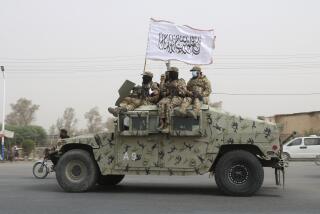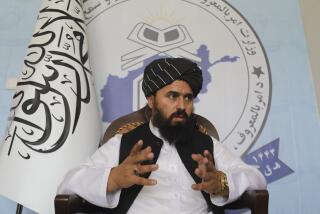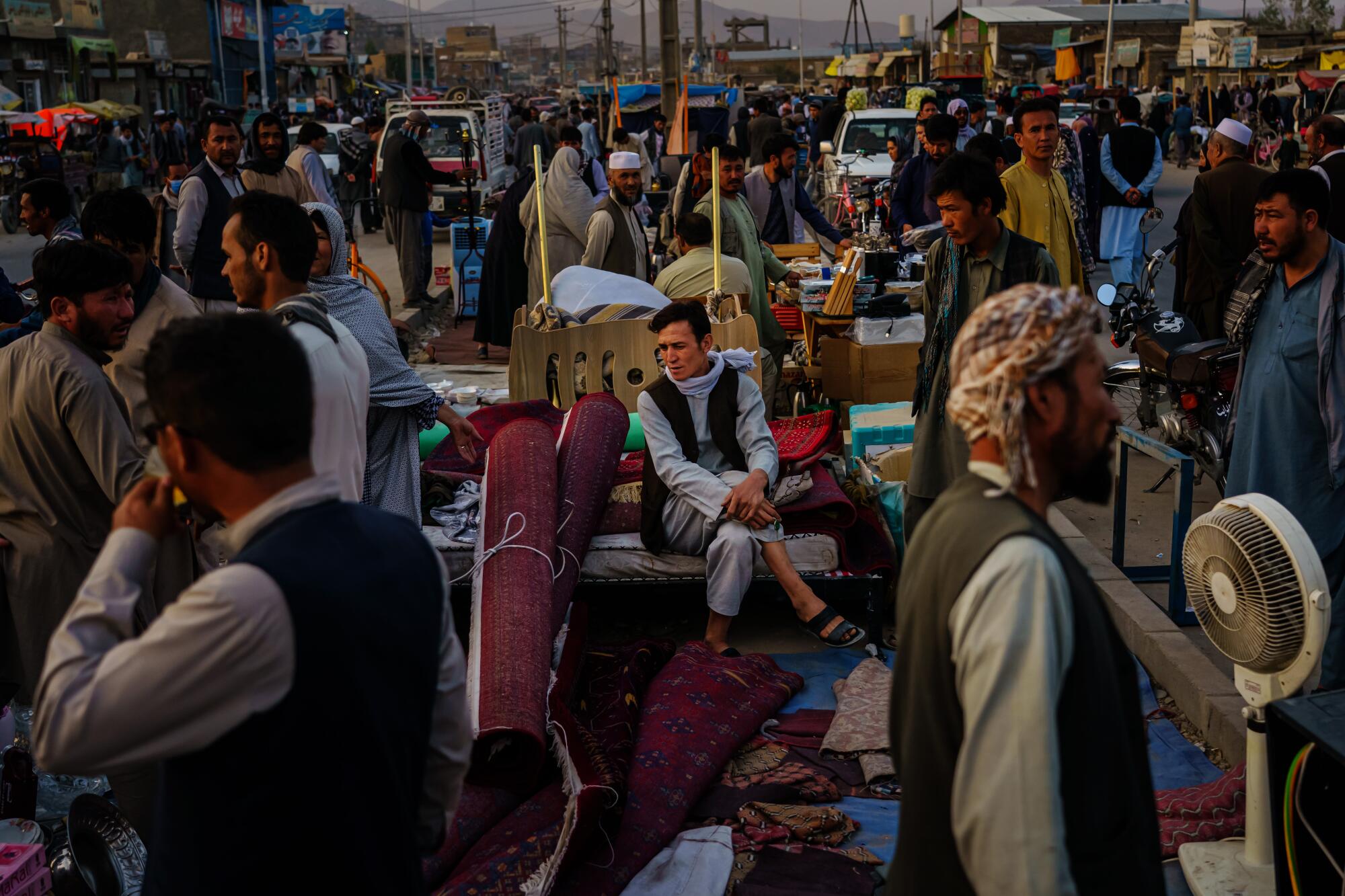
KABUL — What was the “Ka-bubble”? Was it Kabul’s party behind the blast walls, fueled by a mix of diplomats, military contractors, journalists and war tourists? Or was it the madcap real estate market, with staggeringly high rents in a country where most Afghans barely made $2 a day?
Some would say it was less a place than a feeling, the sense that this metropolis — supercharged by billions in Western assistance — was somehow insulated from the daily battles grinding outside the city gates. That wasn’t entirely true. Bombings, assassinations and attacks echoed through the capital over the years. But unlike the provinces and hinterlands, this messy city of markets, mosques and green Ford Ranger pickup trucks felt like a relatively safe space in a battered nation.
Whatever Kabul had become in America’s two-decade-long nation-building experiment in Afghanistan died when the Taliban swept into town. The speed at which the occupation ended, and the disintegration of the government Washington had created with it, spurred the question of whether the U.S. had built anything of permanence in the 20 years since 2001.
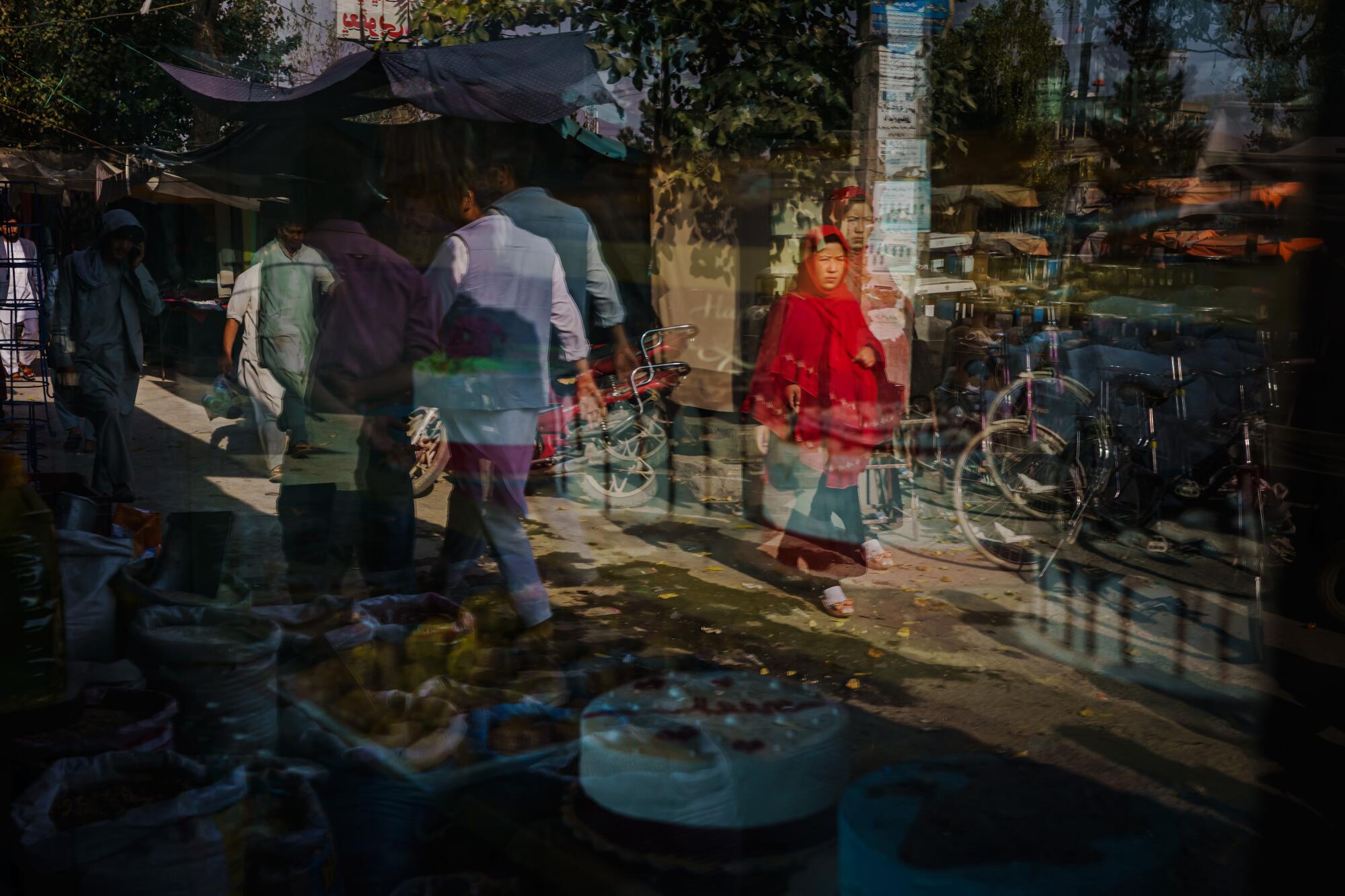
That notion takes on greater urgency these days in Kabul, where girls face new restrictions on schooling, journalists are beaten, the economy is crashing and life is peppered with Islamic fundamentalist warnings. As they contend with their new Taliban overlords, restless and scared residents ponder what is lost and what will endure in a capital transformed since 2001 from a ghost town struggling with the aftereffects of civil war into a chaotic, perpetually smoggy and gridlocked morass of more than 4.4 million people.
The Taliban effect is already showing. Real estate prices have plummeted by as much as 50%, as desperate Afghans still search for ways to escape. Every Western embassy is shuttered — including the American one, which, according to what was meant to be a reassuring email last month, “suspended its operations” as the last U.S. military flight took off from Kabul’s airport. It’s the same throughout the Wazir Akbar Khan neighborhood, where the mansions of former officials — many of whom beat out hundreds of thousands of their compatriots to flee abroad — stand abandoned or with only a caretaker stealing the occasional furtive glance at the street outside.
With that diplomatic exodus came the rolling up of the clandestine network of restaurants, hotels and houses where an expat and a small subset of Afghans could enjoy beer or liquor in a country where alcohol was strictly verboten. The owner of one establishment, fearing Taliban raids, dumped the entire stock of Heineken beer cans and Johnny Walker whiskey bottles into the sewer. (It only partially worked; the bottles sank to the bottom, but beer cans, as it turns out, float in sewage water.)
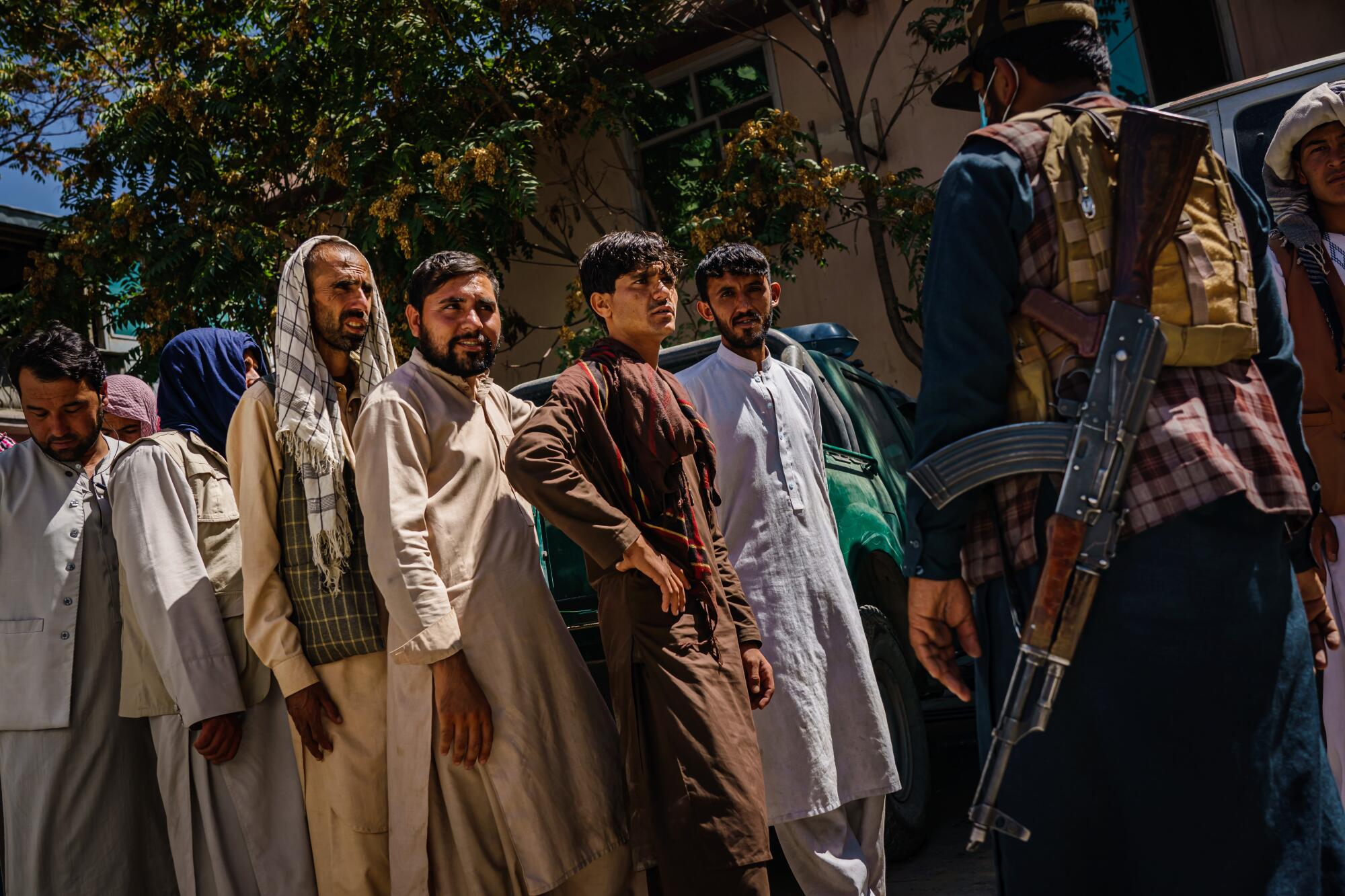
But if the Ka-bubble was only a haven for foreigners creating and feeding off the war economy, there wouldn’t be much for the Taliban to undo. Left behind, though, is a community of Afghans, most of them poor or middle class and unprotected by blast walls, who constructed a cosmopolitan vision of a country very much at odds with the rural existence of the Taliban and most of Afghanistan’s 38 million people.
“The leadership of the Taliban, most are of the age that — without mentioning to them — they feel the change in Kabul every day, because they were here when it was inhabited by less than 500,000 people,” said Daoud Sultanzoy, Kabul’s 66-year-old mayor and one of the few top officials from the bygone state to remain in his post. He referred to the Taliban’s first foray as rulers in 1996, when they entered a capital so destroyed by civil war that “dogs eating corpses were roaming the streets.”
“Now they came to a Kabul that was intact. With all of its flaws, it was a city that had life, that was functioning, it had services, markets, an economy — so they inherited a better Kabul than they had 25 years ago.”
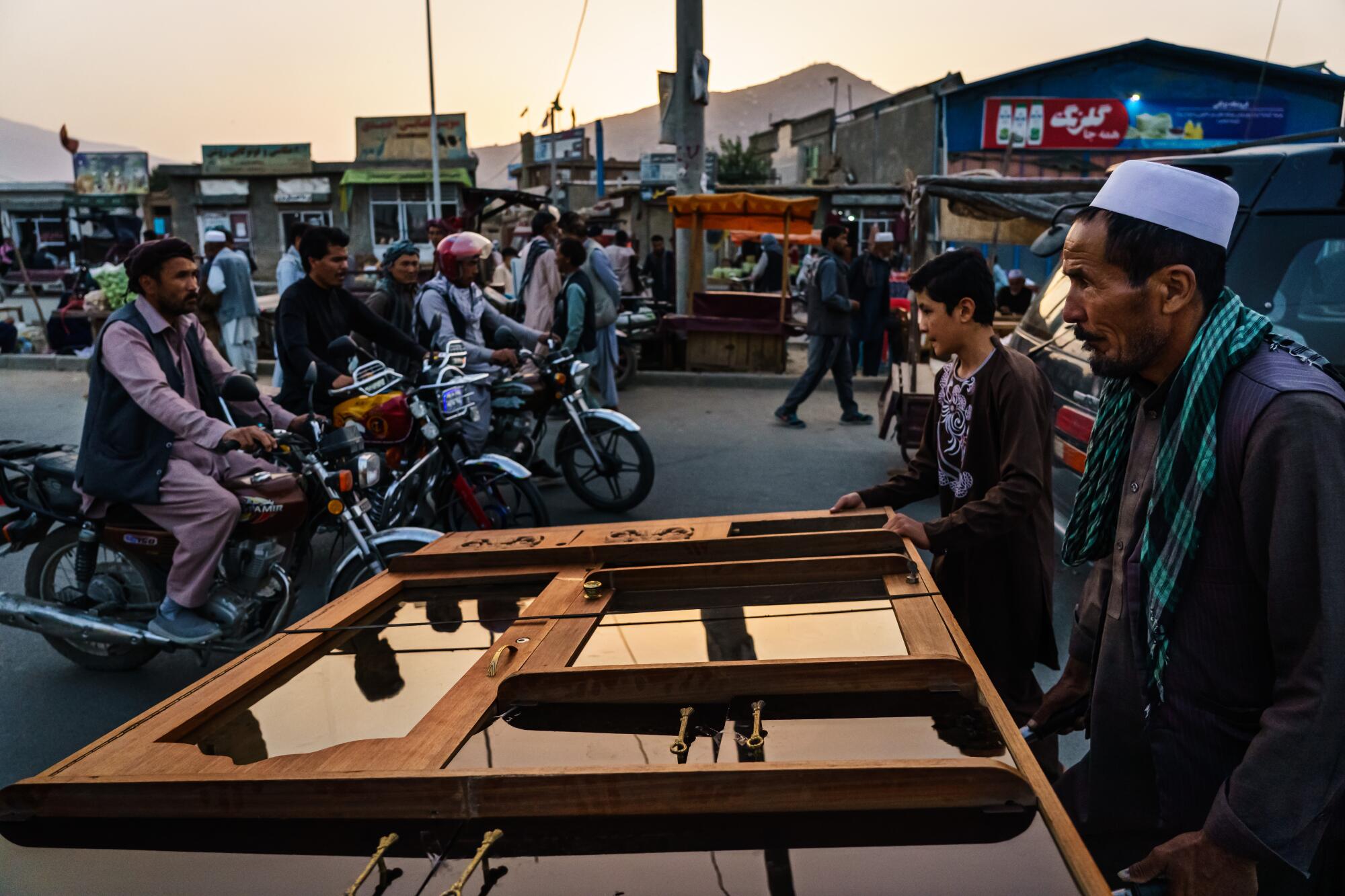
Taj Begum, a cafe in the Pul-e-Surkh neighborhood, is a casualty of the new order. You once knocked on a heavy steel door with a metal grate, where a guard searched you granted access to an elegant sliver of Bohemia. Young men and women talked over pots of green and saffron teas near a garden with a gazebo. Rooms were painted in bright colors and shelves crowded with knickknacks or the framed work of local artists, who thought of Taj Begum as a fulcrum of Kabul’s cultural life.
But fearing the Taliban’s wrath, Taj Begum’s owner, Laila Haidari, shut it down.
One afternoon in August, workers propped open the vestibule door and began to cart out what could be salvaged from the furniture. Inside, Rahmatullah, Taj Begum’s manager, and two women from the staff helped organize items — prints of photographs depicting scenes from around Afghanistan, Taj Begum tote bags, various pieces of equipment — into piles on the ground. They seemed like artifacts of a time gone by.
“It’s finished. We can’t believe it,” he said.
“We don’t know what to do. We’re confused.”
“We’re sad,” added one of the women.
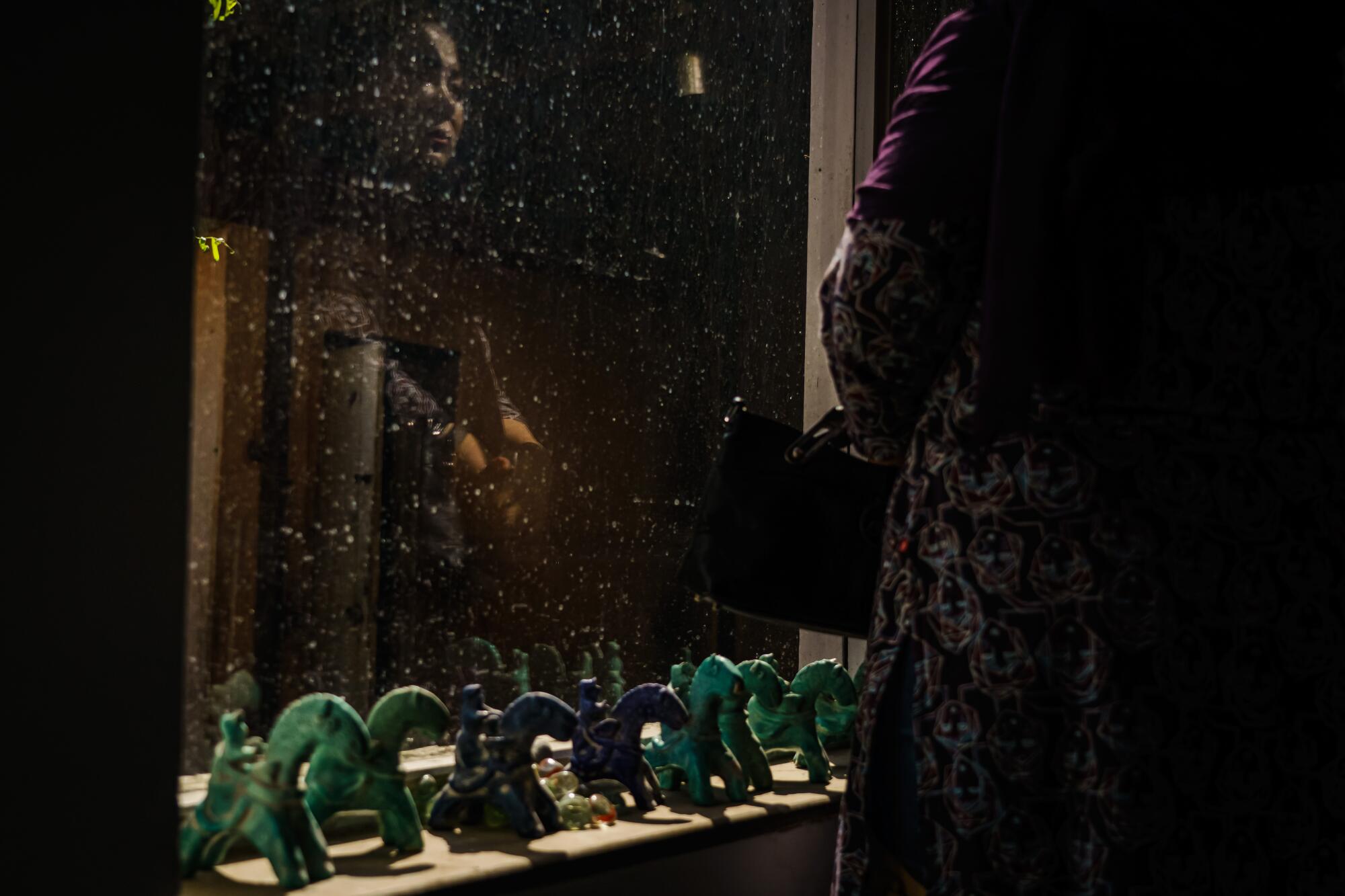
A few weeks later, Haidari visited too. She cried as she saw the dismantling of what had been a “sacred place” for her.
“It was where women, with all their wounds, could come and speak with us, and speak with each other. It gave people their lives back; it touched so many people,” said Haidari, her voice holding back sobs. “Taj Begum wasn’t just a restaurant or a business to me. It was like a cinema, a theater, a place where men and women could sing together.”
The Taliban, meanwhile, has been vigorously erasing vestiges of the old government. Crews from the Ministry of Information and Culture have been painting over the blast walls that had grown over the last two decades like a crust around the Ka-bubble. Before, they had been a canvas for Art Lords, an artist collective that had thrown up elaborate murals depicting children and international figures. Today, they bear stern slogans, including, “Our unity is the key to success,” “The end of occupation is the beginning of freedom” and “Our nation defeated America with Allah’s assistance.”
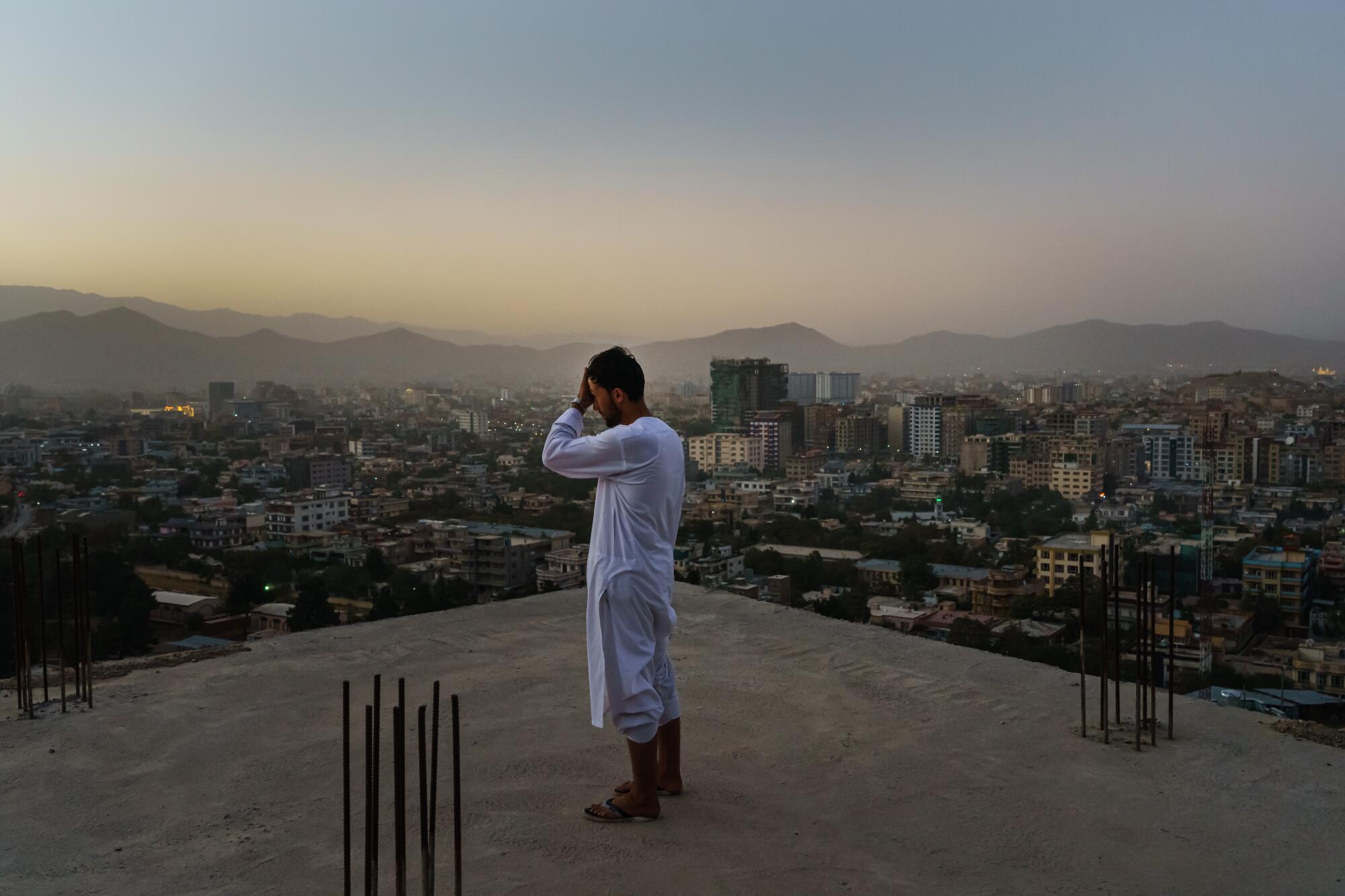
For Omaid Sharifi, Art Lords’ co-founder, now in exile in the United Arab Emirates, the redecorating by Taliban officials is proof they “will do everything in their power to silence people and kill our imagination.”
“Our work wasn’t just murals, but to change people’s behavior and attitudes. This was an indigenous solution to our problem with the blast walls, and we wanted to do this together. We asked everybody to paint with us, from street kids to others,” he said. “It was more than just a mural they destroyed. It was also the social transformation behind what we did.”
The switch in signage is everywhere. From the patches on soldiers’ uniforms to the walls of the U.S. Embassy, from little flags sold by street peddlers on intersections to the pickup trucks commandeered from the defunct Afghan army that are always patrolling Kabul’s neighborhoods, the Taliban’s black-and-white banner is omnipresent.
Since the group entered on Aug. 15, a more somber tempo has taken hold of the capital, with the cacophony of the traffic jams and crowded markets making way at night for a subdued silence broken only by the call to prayer. Kabul’s wedding halls, gaudily decorated buildings where grooms could drop thousands of afghanis on parties lasting well into the early morning, have shifted celebrations to daytime hours.
But what about music, which was proscribed by the Taliban when it first ruled Afghanistan between 1996 and 2001?
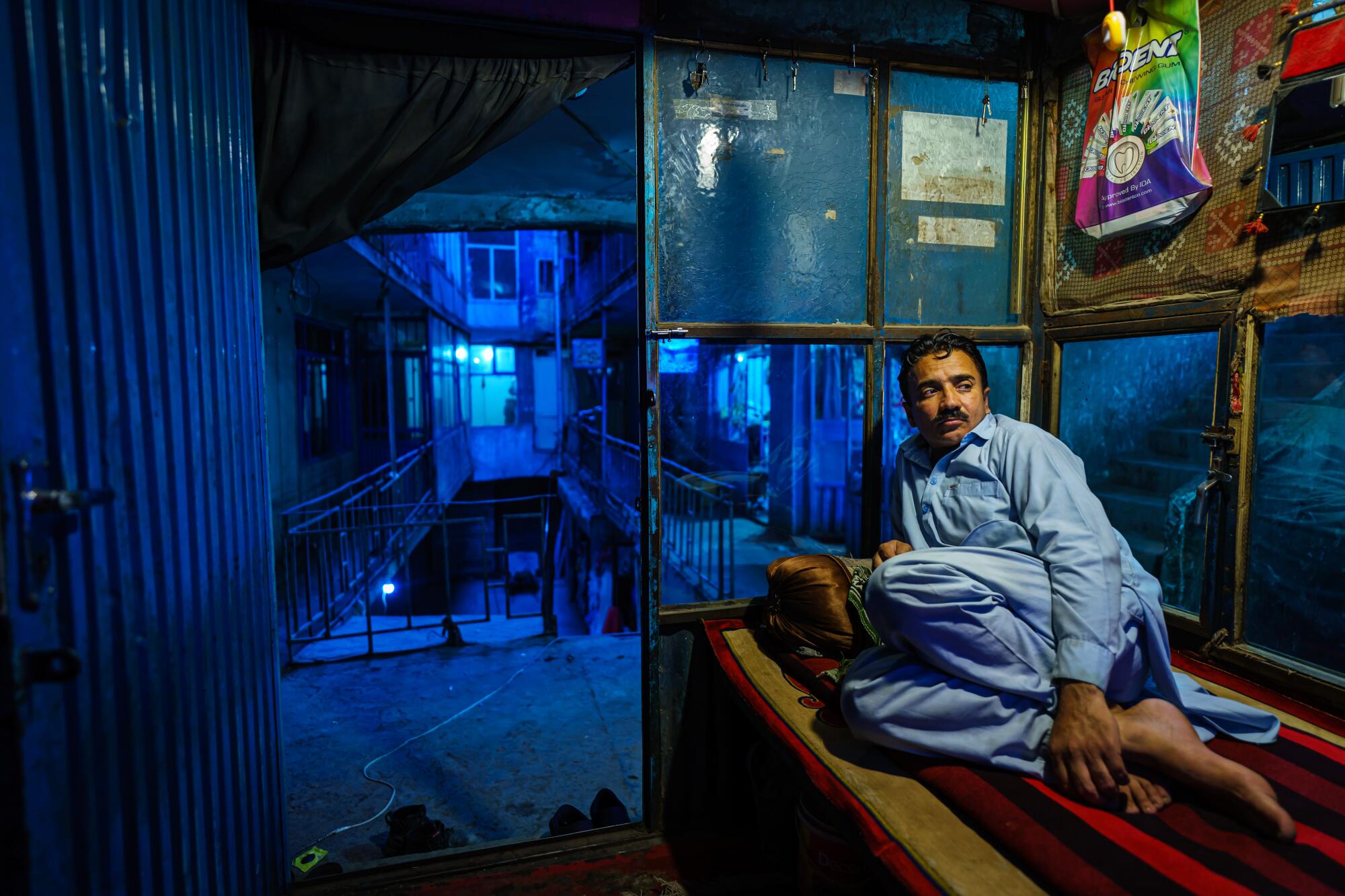
“The Taliban have no problem with it. But only DJs, not live,” said Hamid Qazikhil, a manager standing at the entrance of the Shahr-e-Naw wedding hall. Nearby, two Taliban fighters kept guard as children played with a soccer ball in the outer courtyard.
The ban on live music has been a cataclysm for the wedding performers such as those who taught at the Ghos al Din. The building, a dilapidated four-story sardined between other structures in Kabul’s Shor Bazaar neighborhood, was once home to dozens of music studios. Most have emptied out. Waheedullah Barna, a 45-year-old musician and harmonium restorer, was the exception.
“Everyone left. Some of the musicians are hiding like thieves. They don’t want to show themselves here,” he said, clutching at the pale-white keys of the harmonium he was working on. His lower lip quivered and he blinked, his eyes filling with tears.
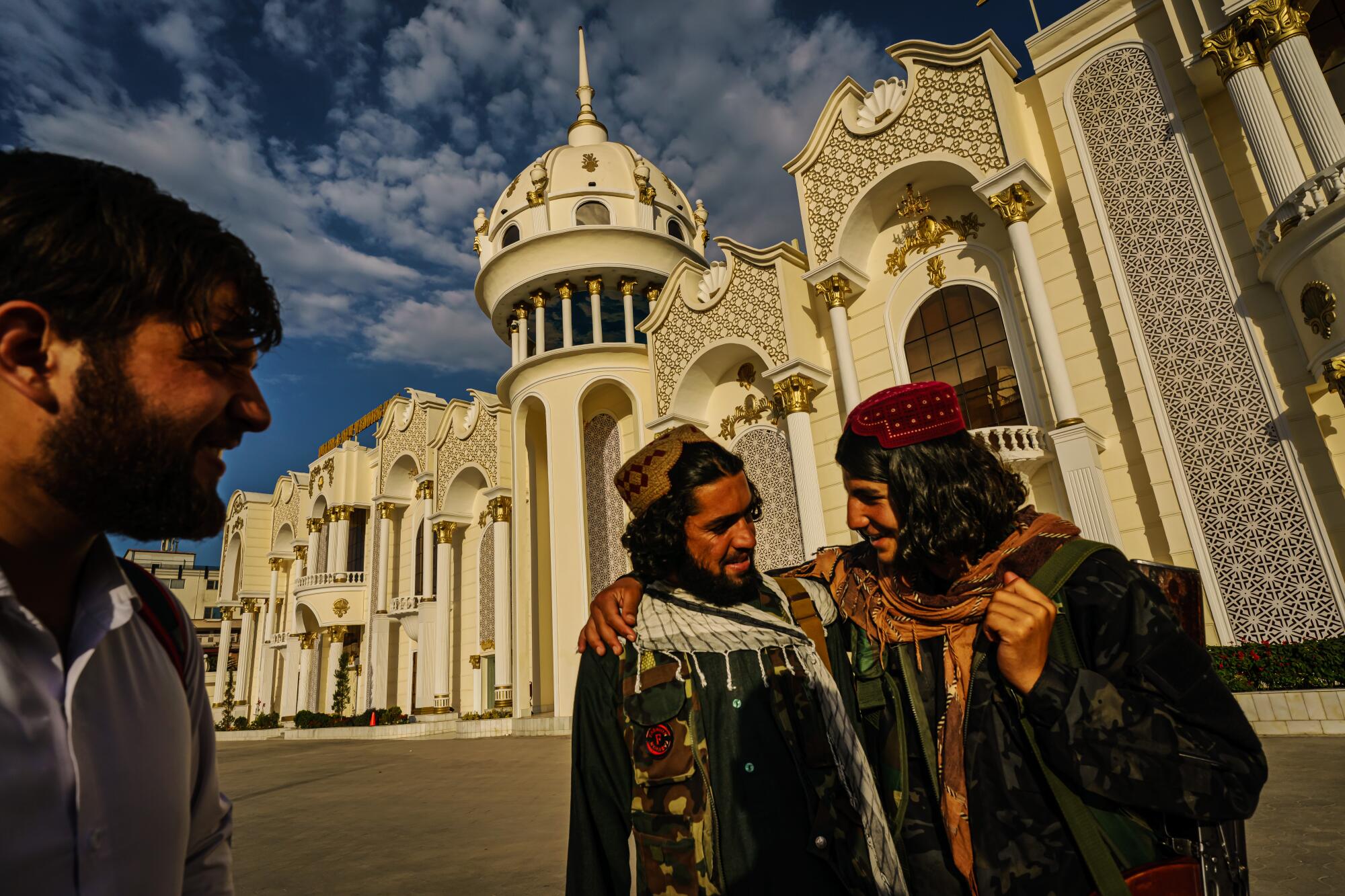
Barna has formed a small band with some of the other remaining musicians; they meet and record music together inside the soundproof room in his studio.
“I need to stay. I won’t go,” he said. “I don’t care what happens.”
Not all forms of entertainment are off-limits, and even the Taliban indulges. Perhaps it’s hard to think of more mutually exclusive terms than “Taliban” and “amusement parks.” But one September evening there it was, like some cracked version of reality: Taliban gunmen, eating swirled towers of soft-serve ice cream, riding in bumper cars, giggling as they laid their M4s carbines to the side before strapping themselves in a chair on the merry-go-round at City Park.
“People see the Talibs with the guns, and of course they’re scared,” said an ice cream stand attendant, nodding toward a group of women shepherding children to the side while giving worried looks to the fighters.
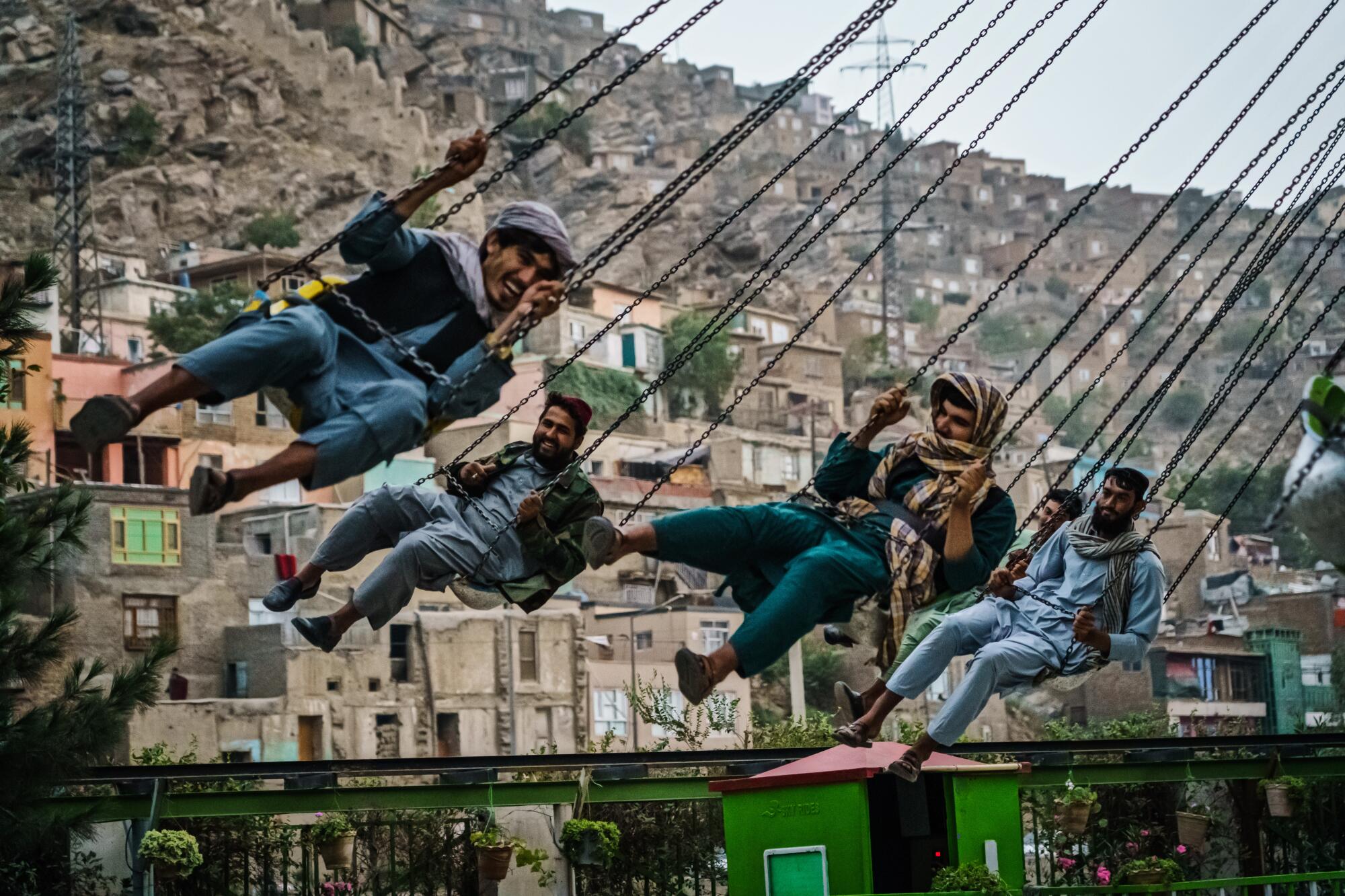
Still, the attendant said, people seemed to be getting used to the sight of gunmen on the rides. Fridays — the first day of the weekend in Afghanistan — were booming again in City Park. Indeed, since the August airlift, that sense of the Taliban as fait accompli, and of trying to find some way of reconciling with the group, is growing.
Some have chosen to help as best they can. Sultanzoy, the mayor, didn’t join high-ranking officials — including former President Ashraf Ghani, now in the United Arab Emirates — in fleeing. Ghani’s departure had left Sultanzoy feeling “very betrayed, and I didn’t want to play a similar part in betraying those I was supposed to serve in this city.”
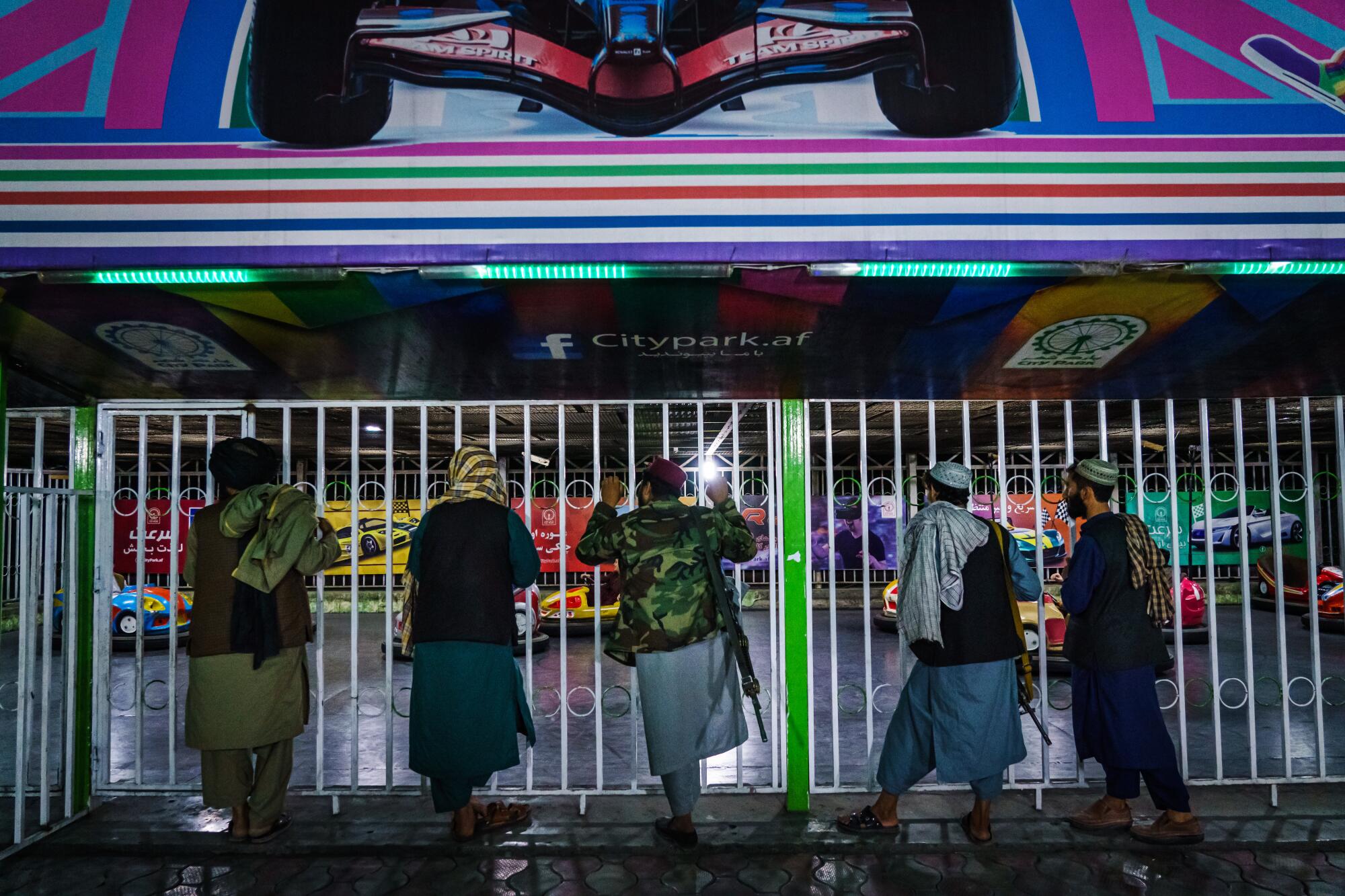
“And I thought right now is the time to mention to the Taliban by actions that, ‘We’re here, that this is also our country, and we have nothing to hide or hide from,’” Sultanzoy said.
“You came with a military victory. We’re here to serve this nation if you’re willing to allow us.”
Others believe that the Taliban should be the one to change.
“The Taliban will have to learn to deal with this. We must help them,” Barna said, adding that one of the Taliban gunmen patrolling Shor Bazaar had expressed interest in music.
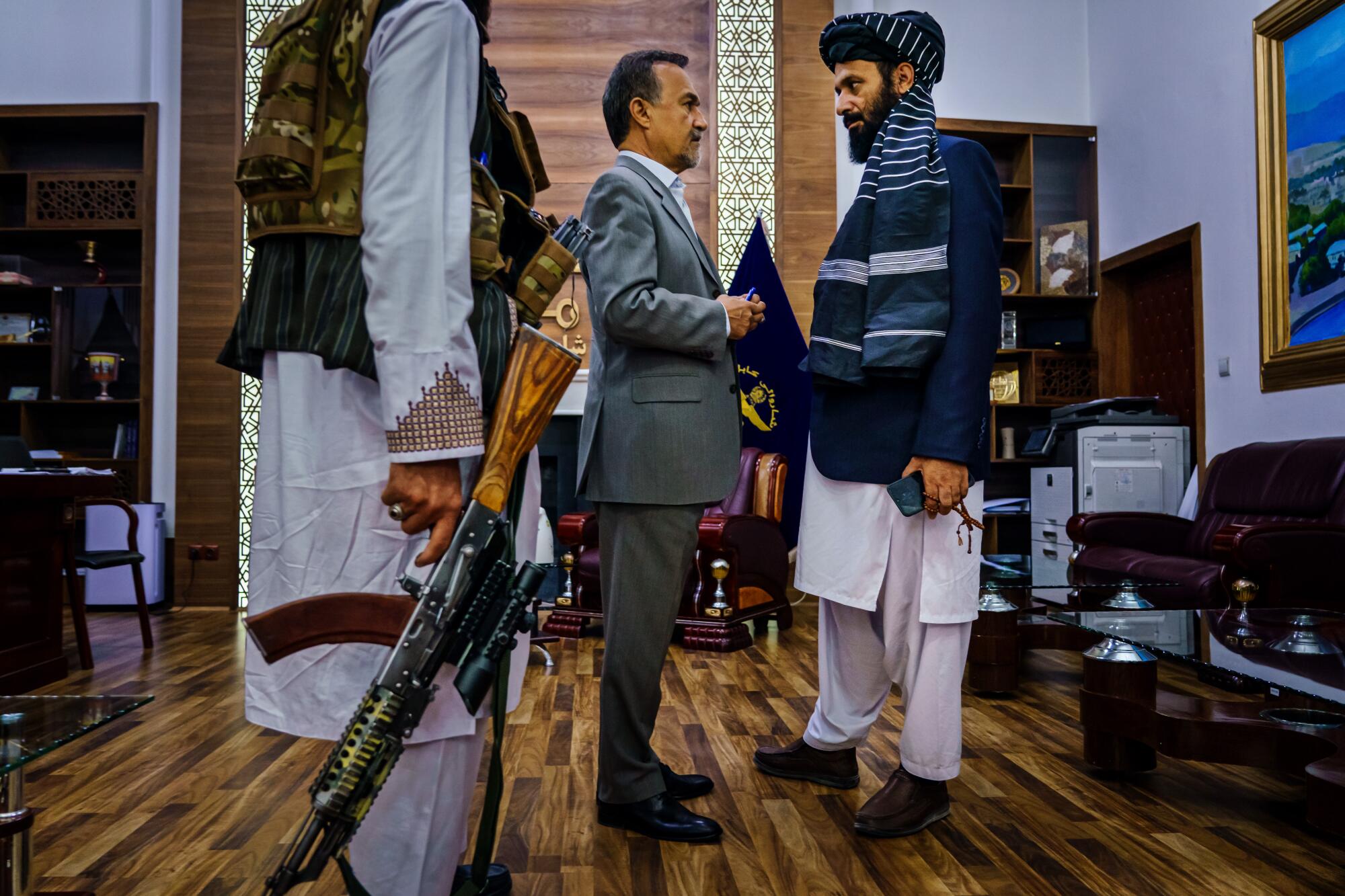
If that effort didn’t succeed, Barna had other plans: Sitting in his cramped studio among the carcasses of harmoniums and other instruments, he took out a knife.
“I made it yesterday,” he said.
“I don’t have a problem with anyone. But if someone wants to harm me....”
His eyes were reddened and glassy as he looked down at the curve of the blade.
More to Read
Sign up for Essential California
The most important California stories and recommendations in your inbox every morning.
You may occasionally receive promotional content from the Los Angeles Times.

